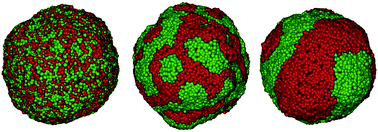Recent developments in biology seems to indicate that the Fluid Mosaic model of membrane proposed by Singer and Nicolson, with lipid bilayer functioning only as medium to support protein machinery, may be too simple to be realistic. Many protein functions are now known to depend on the composition of the membrane. Experiments indicate that biomembranes of eukaryotic cells may be laterally organized into small nanoscopic domains. This inplane organization is expected to play an important role in a variety of physiological functions such as signaling, recruitment of specific proteins and endocytosis. However, mainly because of their complexity, the precise in-plane organization of lipids and proteins and their stability in biological membranes remain difficult to elucidate. This has reiterated the importance of understanding the equilibrium phase behavior and the kinetics of fluid multicomponent lipid membranes. Current increase in interest in the domain formation in multicomponent membranes also stems from the experiments demonstrating liquid ordered-liquid disordered coexistence in mixtures of lipids and cholesterol and the success of several computational models in predicting their behavior. This review includes basic foundations on membrane model systems and experimental approaches applied in the membrane research area, stressing on recent advances in the experimental and computational techniques.

You have access to this article
 Please wait while we load your content...
Something went wrong. Try again?
Please wait while we load your content...
Something went wrong. Try again?


 Please wait while we load your content...
Please wait while we load your content...